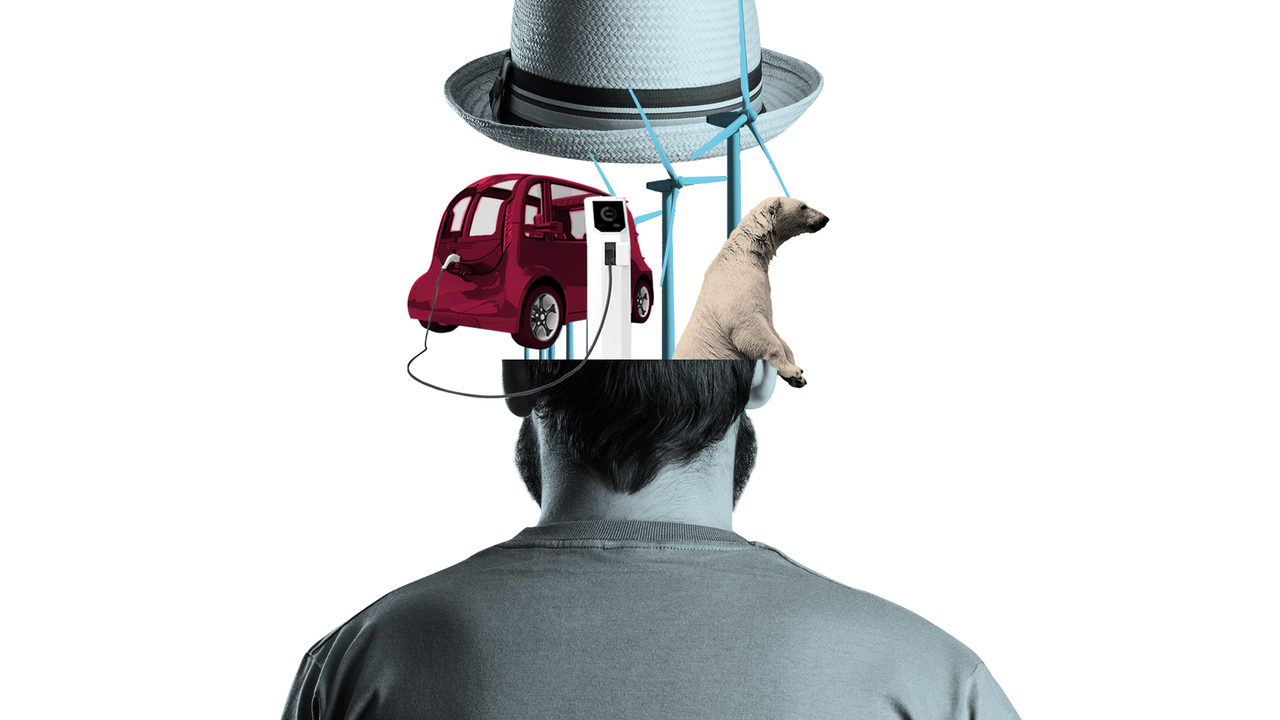When Granddad was a child, there was always snow at Christmas. Large, pure white snow drifts covered the landscape, and the trees were wearing their decorative snow hats. In the winter, you could go skiing and sledging or make big snow fortresses. Granddad’s childhood passed, and all of a sudden there was no longer snow at Christmas, but instead a damp greyness everywhere, and the trees were just their normal colour. Where did the snow go? No more skiing, no more sledging, not to mention those snow fortresses. Something permanent and very sad had happened. But what? Granddad doesn’t really know, although Granddad should know, because through his ignorance Granddad was playing his part in causing those grey Christmases. Forgive me, my children.
A similar story to this was written by nearly all of the 224 respondents who participated in the SenseMaker survey carried out by Greenpeace. Greenpeace had asked respondents how they would describe the winters of their youth to their grandchildren in 2050.
The stories told of frost-chapped cheeks, kick sleds and snow diamonds. And then things turned to a permanent, depressing, damp greyness.
The request for a narrative was not perhaps so successful, because the stories were so similar, admits Greenpeace’s Nordic Programme Leader Sini Harkki. But a number of conclusions can be drawn from the data nevertheless.
First, when respondents were asked who is responsible for the change, the majority blamed businesses and politicians. Individual responsibility was mentioned less.
Many thought that their own individual acts wouldn’t have any impact. The most common feelings were anguish (narrative 1: see the narratives below this article), helplessness and nostalgia. A sense of hope was expressed by only one respondent, who expected to already be dead by 2050.
In fact, the similarity of the stories tells its own truth. Not a single respondent described the winters in 2050 as being the same as before (narrative 2). Nobody believed that the will (narrative 3) or the methods to stop climate change would be found before this date.
If only we had acted in time (narrative 4), many said. People are greedy creatures who are not able to look far enough ahead. Vegan food and recycling didn’t help either. Forgive me, my children.
An overwhelmingly big problem
It is very surprising, perhaps even concerning, that these answers were received from the supporters or occasional donors on Greenpeace’s email list – a group of people that are more ready than the average person to take action to stop climate change.
“This sense of helplessness is no surprise in itself, because climate change is such a huge problem,” says Harkki, giving an example: at the current rate, the planet may only be able to support one billion people by 2100, which means that nine billion would die.
The media has also changed the way it writes about climate change. Whereas before advice was given on using energy-saving light bulbs and cycling to work, now news articles speak of the climate sins of superpowers and big businesses.
“We have also tried to take our communication in that direction – that people should try to influence the structures and political decision-makers. For example, a Helsinki resident cannot with their own consumer choices do anything about their energy consumption because the city’s district heating is produced with coal,” Harkki points out.
“On the other hand, these responses bring to mind the thought that perhaps the small individual acts are significant simply because they can make the person feel that they are actively involved. If we begin with something small, it can then lead to a situation where we start to have an impact together with others.”
Navigating between knowledge and anguish
In Harkki’s opinion, the feeling of anguish can be an effective force for change when the person is also able to see possible solutions and sources of hope. The cynical hopelessness that pervaded the survey results, on the other hand, does not seem good.
It gives a lot to consider for Greenpeace’s communication and campaigning.
“In some way we must describe to people how bad the situation is because an understanding of climate change is essential. But at the same time, we must be careful not to create the feeling that it is impossible to do anything about it.”
The Greenpeace survey has indeed provoked discussion on how to encourage people to take action if they have lost hope.
“One implication is that if we ask people to do something we must also be able to show what effect it will have,” Harkki says. “We have already carried out campaigns in which we emphasise the solutions. I have also thought about whether it would be possible to highlight more stories of people that have succeeded in changing the world.”
In the survey and the correlational analysis carried out by the Cynefin Centre, things were observed which in Harkki’s opinion should be studied further. For example, there seemed to be a correlation between a connection with nature and emphasis on community; but what does this mean?
Harkki believes that research methods like SenseMaker will continue to be useful. Complexity itself is familiar to Greenpeace.
“We carry out a lot of experiments and we test our assumptions, we keep our strategies open. Greenpeace’s strategic thinking has in fact always fitted well with the complexity approach. We seek those moments of disruption when it is worth focusing on a particular problem in order to try and get in motion a snowball effect.”
And when dealing with climate change, it is precisely these snowball effects that are needed.



Latest